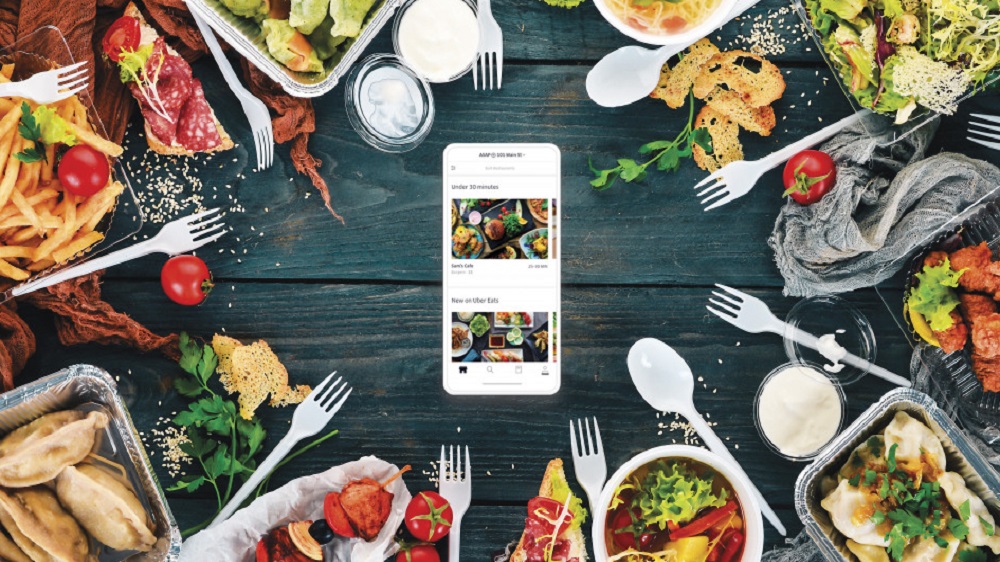Why Food Delivery Model is Essential for Restaurant Businesses post-Covid


The Covid-19 pandemic has had a massive effect on the restaurant industry with a longer duration of lockdowns and Covid-related restrictions. As the country steadily recovers from the lockdown to embrace what many of us refer to as the ‘new normal,’ the foodservice and delivery industry is putting its best foot forward to make up for the business loss of over three months.
While online food and grocery deliveries managed to become the lifeline that customers relied on throughout the lockdown phase, many still have a preference towards ordering food online to avert stepping outside for dining altogether.
Dining-Out Yet to Bounce Back
The dining out segment in India is yet to bounce back and operating at 15-30 percent of pre-Covid levels. While the restaurants in food courts and prominent markets in metro cities are operating at 50-60 percent of their sales in the pre-Covid times, restaurants in many smaller cities are finding it hard to bounce back. Although the lockdowns are over, consumers are not stepping out due to fear of transmission, which has led many restaurants to close permanently or changing their business model to online deliveries and take-aways.
“Even in cities where restrictions have been lifted, only 17 percent of dining-out restaurants were open for business till August 2020. “Out of the 83 percent restaurants that were not open for business, 10 percent of restaurants had shut down permanently and we anticipate additional 30 percent restaurants not to reopen at all. The remaining 43 percent are in the process of opening up,” informs Deepinder Goyal, Founder & CEO, Zomato.
He added that most of the customers have decreased spending on dining out and some of this spending is shifting to food delivery. “Almost 60 percent of restaurateurs said they estimate to retain less than half of their original business volumes for a few months even post-Covid.”
Food Delivery Considered Safe
As per the latest data from a study conducted by the food aggregator Zomato, the food delivery segment has largely recovered, with the overall sector clocking around 85 percent of pre-Covid GMV (Gross Merchandise Value).
The food delivery segment has shown stronger signs of recovery led by the affluent residential areas across the country. According to research data from Zomato, few areas in some cities are clocking higher GMV than pre-Covid times. Apparently, food delivery is considered safe as affluent neighborhoods no longer fear contagion from food delivery, and are combining home entertainment with outside food. As a result, residential areas are doing 50 percent better than commercial areas. Restaurants in and around commercial districts are expected to take the longest to recover.
“Food deliveries in metros like Delhi and Mumbai are nearing full recovery at 95 percent of pre-Covid levels. Interestingly, some cities such as Kolkata, Patna, Jamshedpur, Ranchi, and Siliguri have recovered completely and have exceeded pre-Covid levels. However, cities like Bengaluru, Hyderabad, and Chennai are still behind the curve at around 80 percent of pre-Covid food deliveries,” shares Goyal.
In fact, brands that focus on food deliveries and take-away are faring better than their counterparts. “Home delivery has been a core proposition in Baskin Robbins India. Our focus on home deliveries helped us tremendously during current times. In addition, we designed our marketing initiatives to drive frozen dessert consumption in-home and out of the home. Analytics from our loyalty program helps customize messaging to our loyal customer base,” shares Sameer Bargir, Head, Business Development, Baskin Robbins India.
Further, many of the take-away and dine-in focused brands have drafted innovative strategies to engage consumers. “During the lockdowns, we launched a DIY section with our premix and a variety of accompaniments online so that our customers could continue to enjoy the product in the safety of their homes. We also worked closely with online partners to use a data-driven approach to create the right bundling and promotional strategy to provide value and excitement to the online consumer. As a result, we launched innovative combos, mini waffles boxes for IPL and Diwali and so on, which became quite popular,” says Ankit Patel, CEO, Bloombay Enterprise, which owns The Belgian Waffles Co.
Work from Home Boost
With companies giving employees the option to work from home, there has been a mass exodus of people from metros to other cities across India. Hence, many of the smaller cities have fared exceedingly well on the food delivery front as people working from home have carried their food habits, which includes ordering food online.
As per Zomato research data, 1 in every 5 Zomato customers in metros (pre-Covid) has opened their app from a smaller town till August 2020. Out of these relocated people, over one-third have already started ordering food again from their new location.
“Interestingly, ordering frequency of customers after their first order mid-Covid is the same as pre-Covid, which shows that the first order mid-Covid is key for customers to cross the hump of safety perception,” shares Goyal of Zomato.
Festive Spirit
With lockdown restrictions as well as precautionary measures, celebrations have largely moved back home. This has resulted in a massive spike in food deliveries during festivals and occasions such as Raksha Bandhan, Janmashtami, Independence Day, and Deepawali. Customers, who had not ordered since the first day of lockdown, are 20 percent more likely to order for the first time during such festivals and occasions.
The festive spirit has also resulted in a significant increase in order sizes. “As customers spend more time with their families, group ordering has become more relevant than ever. Order sizes, i.e. items per order, have increased by 20 percent over pre-Covid levels. Recovery on single-person meals, which constituted nearly 60 percent of all orders pre-Covid, lingers at 50-70 percent level for most regions. On the other hand, orders with meals for 3 or more persons have recovered well and are higher than even pre-Covid levels,” reveals Goyal.
With the ongoing festival season and the New Year around the corner, food delivery in both metros and smaller cities is expected to make a full recovery soon – and resume growing over pre-Covid levels.






